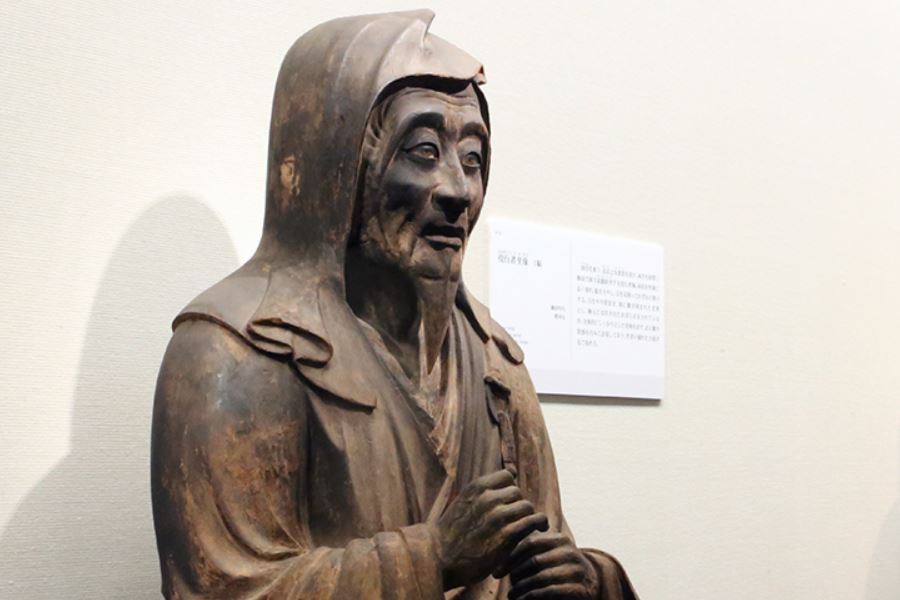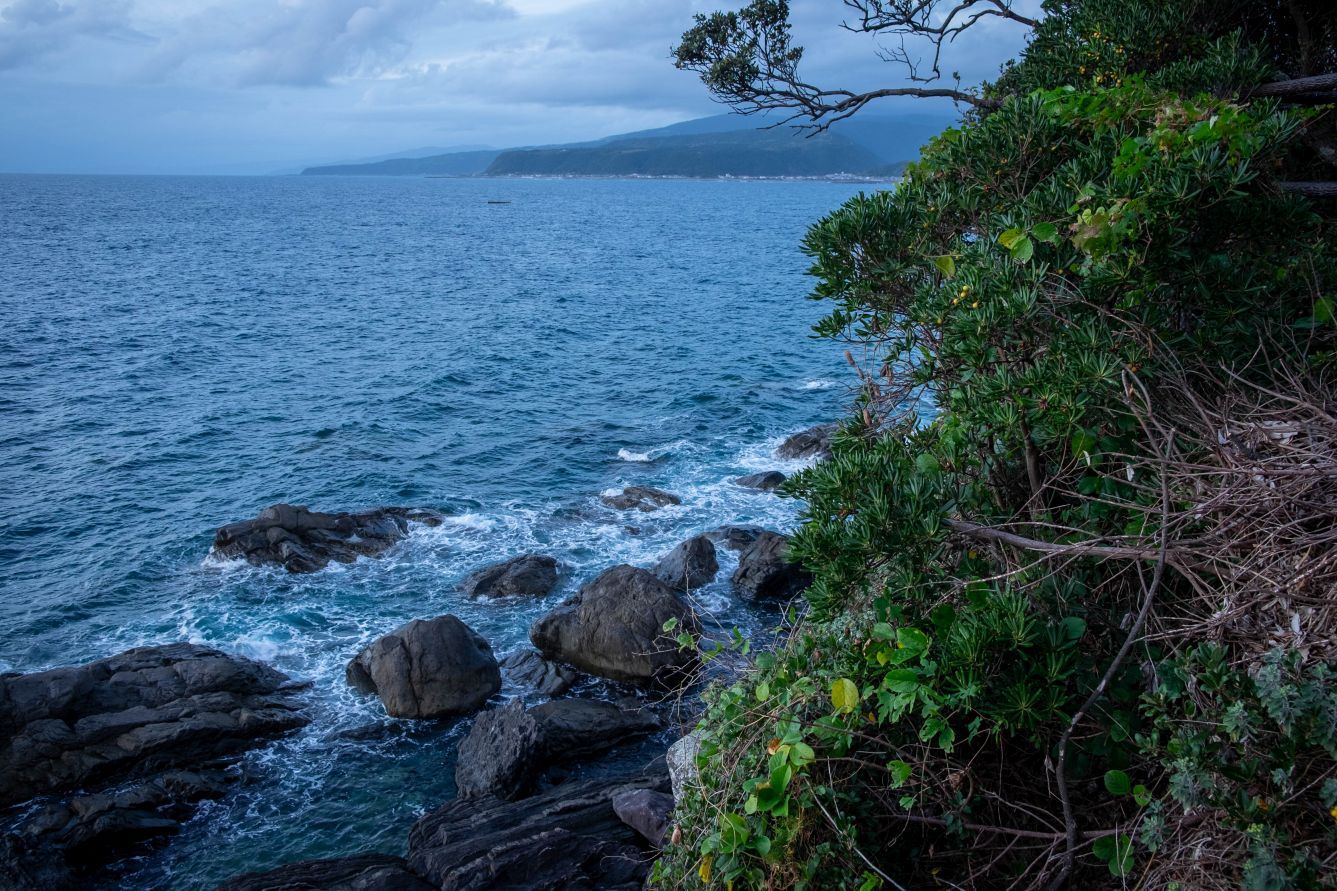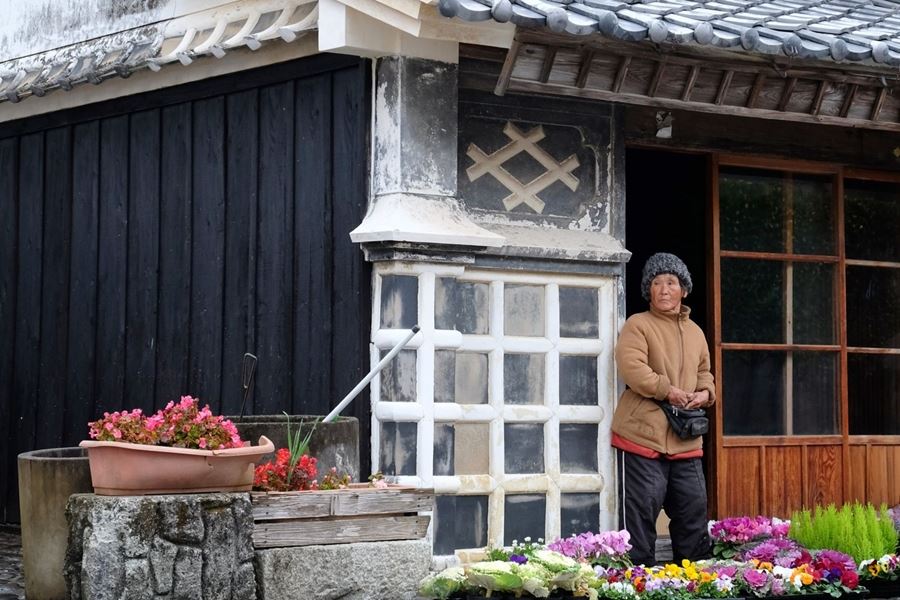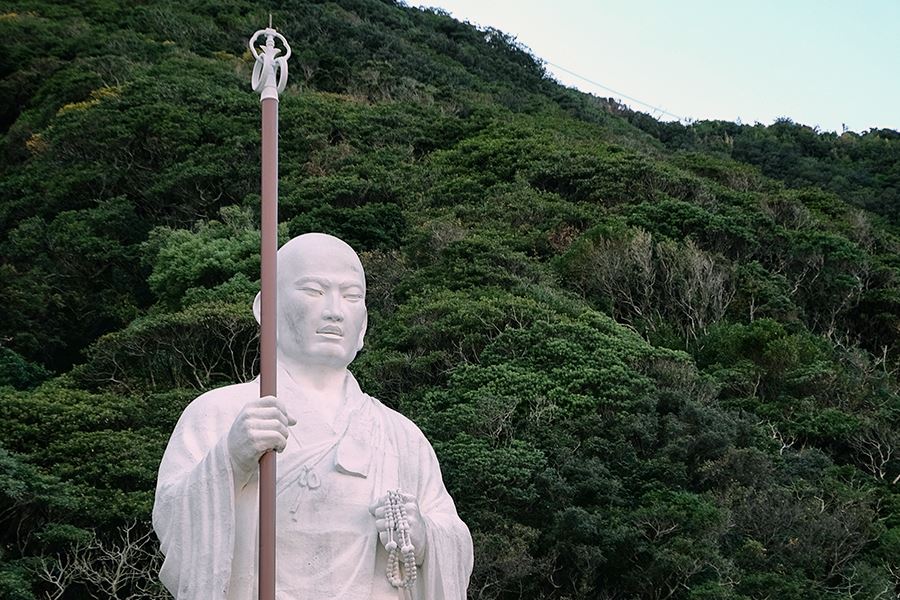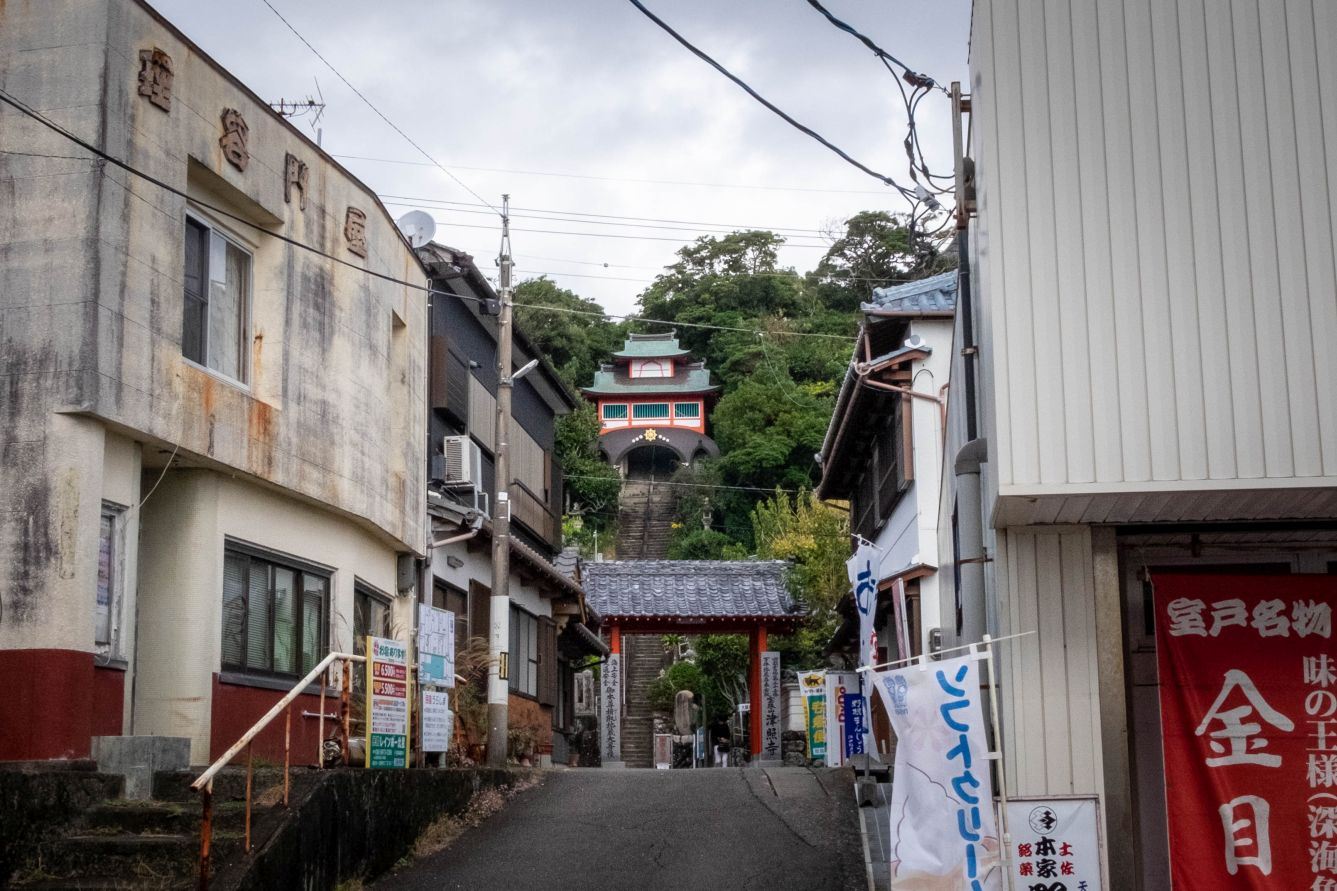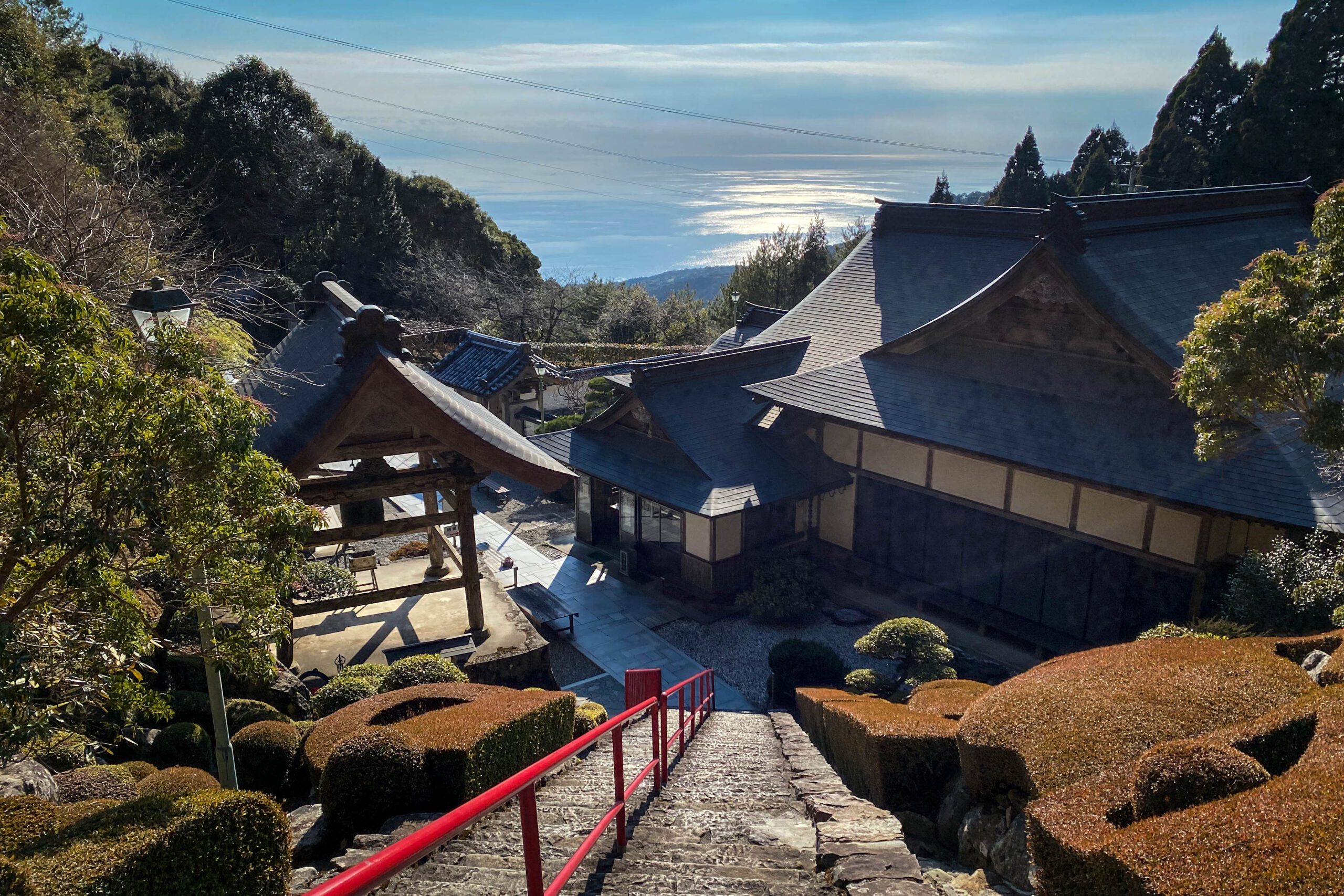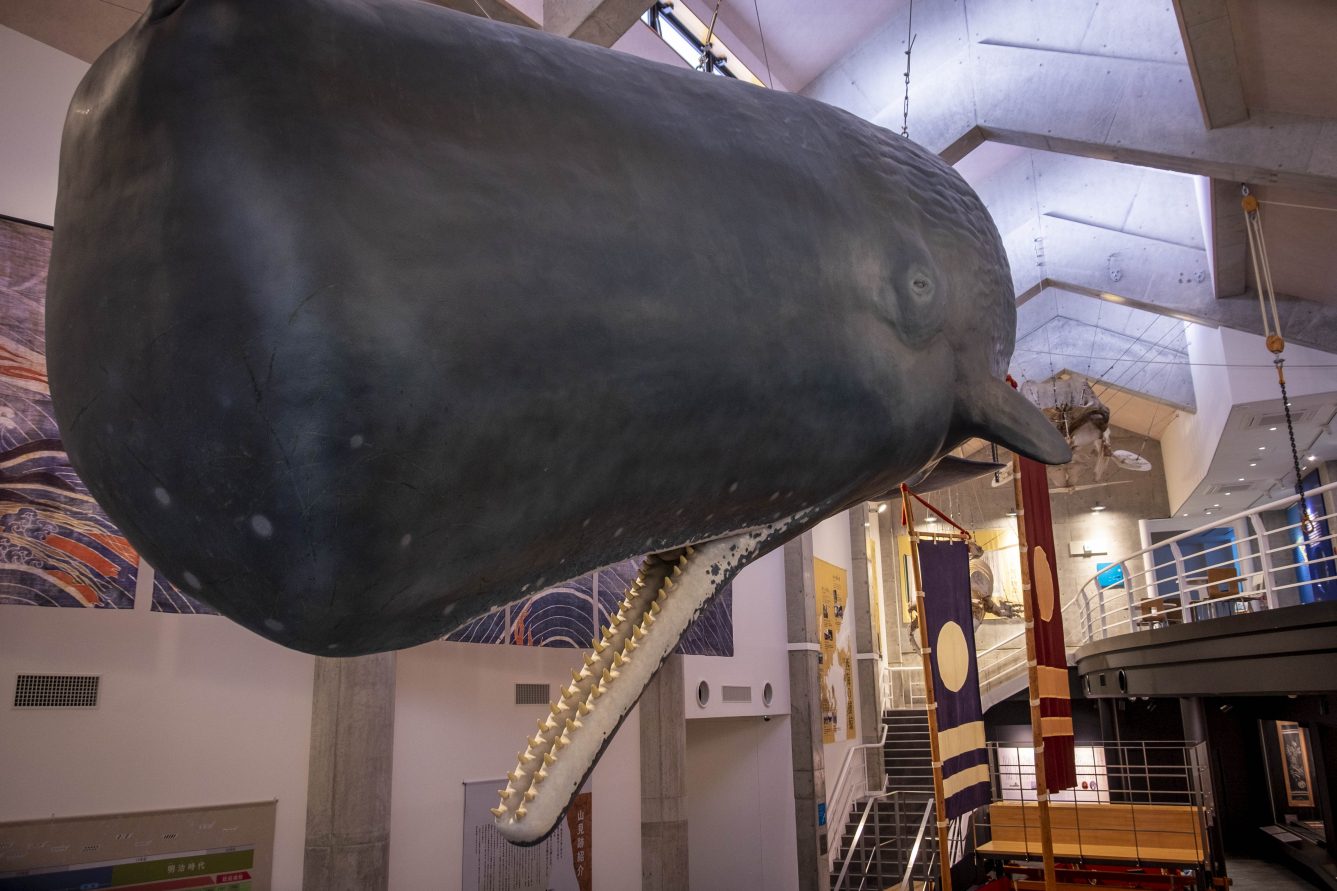Temple 26, Kongōchō-ji
Home » Temple 26, Kongōchō-ji
Temple 26, Kongōchō-ji
Kongōchō-ji is temple No. 26 on the Shikoku pilgrimage, or Henro. It’s one of the three temples in Muroto known collectively as Muroto Sanzan. It stands in woodland high on Cape Gyōdo, one of several promontories that protrude from the west side of the Muroto Peninsula.
What to see
A flight of steps leads up the main gate, which is hung with a big pair of straw pilgrim’s sandals. Beyond the gate are more steps up to the large temple compound.
To the left is the Daishi Hall. Copper panels on the Daishi Hall depict the founding myth of the temple. A stone statue of Kūkai shows him as a stout and doughty person. To the left of the main gate is a metal cauldron in which Kūkai boiled one grain of rice and it multiplied to feed numerous monks. There’s also the remains of a camellia tree which is said to cure cancer.
To the right is a belfry with six pillars. This is a sign of the prestige of this temple, and there are only a dozen or so temples in Japan with a six-legged belfry. The prestige of Kongōchō-ji derives from the patronage of the lords of Tosa. The first lord, Yamauchi Kazutoyo designated the temple as a place of prayer and the second lord, Tadayoshi, built seven halls. Excavations are being undertaken in the precincts to learn more about the halls that once existed.
In front of the main hall is a splendid incense urn with dragon ornamentation. The main hall burned down numerous times and the current building dates from the middle of the last century.
On the coast below Kongōchō-ji is Fudoiwa Rock where Kukai found enlightenment. The site is the Okunoin, or inner sanctuary, of Kongōchō-ji Temple. A museum of Kūkai’s life has opened recently.
History
According to the temple, it was the first temple founded by Kūkai by imperial order, and in 807, at the request of Emperor Heizei, Kūkai carved the principal image of Yakushi Nyorai. The temple was forbidden to women. The next Emperor Saga called for the temple to be called Kongōchō-ji. A record from the Edo period relates that Kūkai built the temple when he returned from China. The next Emperor Junna also designated the temple as a place of imperial prayer, and the chief priest was selected by imperial order until the 10th generation. The temple prospered until the time of the 16th generation, when there were more than 180 trainee monks.
By the Kamakura period, imperial patronage had ended, and the temple became a place of refuge for outlaws and outcasts. It existed as a sanctuary that couldn’t be violated by any authority.
In 1479, the temple buildings were damaged, but Chōsokabe Motochika donated territory to the temple. It was also a place of prayer for the Yamauchi family, the lord of the Tosa domain, and reconstruction was completed quickly. After that, a fire in 1899 burned down the buildings other than the Daishi Hall and Goma Hall, and the main hall and other existing buildings were rebuilt.
Legends
It’s believed that Kūkai founded Kongōchō-ji in 807. When he arrived, a tengu appeared and entered into a debate with Kūkai. The tengu lost the debate and was told never to appear again, and was confined to Cape Ashizuri. This story suggests that there was a conflict with the Shugendō followers of En no Gyōja, who are often associated with tengu. By losing the debate, they were shown to be heretics, fit for banishment. The Daishi Hall was built facing toward Cape Ashizuri as a sign of this resolution.
Information
Name in Japanese: 金剛頂寺
Pronunciation: kongōchō-ji
Address: 523 Motootsu, Muroto, Kochi 781-7108
Related Tours

Experience the most beautiful and interesting temples of the Shikoku Pilgrimage in seven days.

A tour for families or friends, staying in the most characterful kominka and ryokan of Shikoku.

Visit the most beautiful and interesting temples of the Shikoku Pilgrimage and walk the toughest trails.

